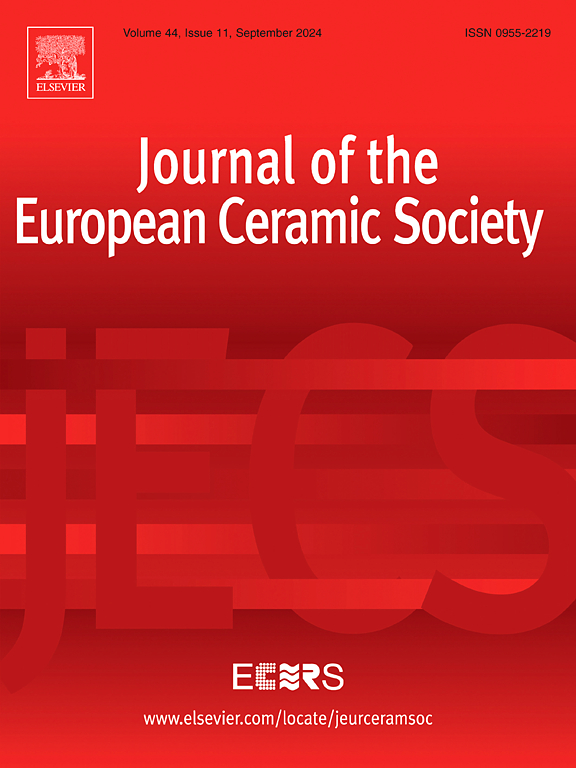Ni-doped cobalt-free perovskite as the cathode for proton ceramic fuel cells
IF 5.8
2区 材料科学
Q1 MATERIALS SCIENCE, CERAMICS
Journal of The European Ceramic Society
Pub Date : 2025-01-08
DOI:10.1016/j.jeurceramsoc.2025.117199
引用次数: 0
Abstract
Proton ceramic fuel cells (PCFCs), as a clean energy technology with broad application prospects, hold tremendous potential in the field of energy conversion. The development of PCFCs is limited by air electrode due to the slow kinetics at below 700°C. This paper introduces novel cobalt-free cathode Ba0.5Sr0.375Fe0.875-xZr0.125NixO3-δ (D-BSFZNx, x = 0, 0.125, 0.25) for PCFCs. Among them, D-BSFZ exhibits a second phase, which transfers to a pure phase after Ni doping. Based on the first-principles calculations (Density Functional Theory (DFT)), the oxygen vacancy formation energy decreases from 0.37 eV for D-BSFZ to 0.04 eV for D-BSFZN0.125. The research results indicate that Ni doping favors the formation of . The Density of States (DOS) and energy band diagram indicate a reduction in the band gap from 0.0065 eV to 0.0017 eV. The maximum conductivity increases from 43.20 to 64.59 S cm⁻¹ within the temperature range of 300–800 °C, suggesting that Ni doping can enhance the conductivity of D-BSFZ. The polarization resistance of D-BSFZN electrode on BaZr0.1Ce0.7Y0.1Yb0.1O3-δ (BZCYYb) electrolyte at 650 °C is 0.06 Ω cm² in air, and the polarization resistance stability test at 550 °C can reach 100 h without significant degradation. The maximum power densities (MPD) of the single cell with D-BSFZN0.125 as air electrode at 650 °C reaches 779 mW cm⁻².
求助全文
约1分钟内获得全文
求助全文
来源期刊

Journal of The European Ceramic Society
工程技术-材料科学:硅酸盐
CiteScore
10.70
自引率
12.30%
发文量
863
审稿时长
35 days
期刊介绍:
The Journal of the European Ceramic Society publishes the results of original research and reviews relating to ceramic materials. Papers of either an experimental or theoretical character will be welcomed on a fully international basis. The emphasis is on novel generic science concerning the relationships between processing, microstructure and properties of polycrystalline ceramics consolidated at high temperature. Papers may relate to any of the conventional categories of ceramic: structural, functional, traditional or composite. The central objective is to sustain a high standard of research quality by means of appropriate reviewing procedures.
 求助内容:
求助内容: 应助结果提醒方式:
应助结果提醒方式:


